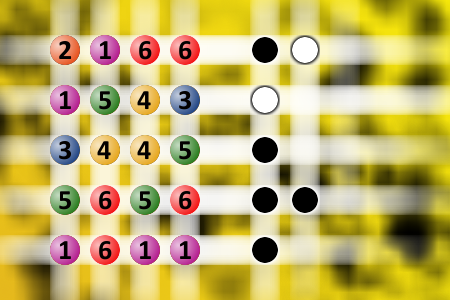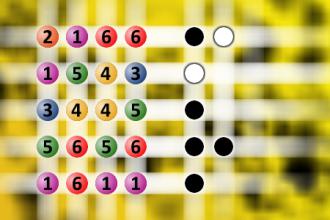What a winning combination?
The computer chose a secret code (sequence of 4 digits from 1 to 6). Your goal is to find that code. Black circles indicate the number of hits on the right spot. White circles indicate the number of hits on the wrong spot.
Selection of recent Dad jokes and puns
When does a sandwich cook?
When it is bakin' lettuce and tomato.
Why did the smart phone need glasses?
It lost all its contacts.
What state has the smallest drinks?
Mini-soda.
Why did the cow cross the road?
They wanted to go to the mooooovies.
What do you call a funky car?
Mustang.
What did the hammer say to his homeboys?
Nailed it.
Why are cats good at video games?
Because they have nine lives.
What do you call a deer with no eyes?
No idea.
What is big and green and falls off over the tree will kill you?
A snooker table.
What did the French guy do when he drank too much water?
He went oui oui in his pants.
Where do pencils spend their vacation?
Pencil-Vania.
What do flies eat for breakfast?
A bowl of poop loops.
Why did the balloon go near the needle?
He wanted to be a pop star.
What did the duck do when he read all these jokes?
He quacked up.
Why was the tomato all red?
It saw the salad dressing.
What do you call a female magician in the dessert?
A sand witch.
How do billboards talk?
Sign language.
I hurt my foot driving the other day. You know what I called?
The toe company.
What does a dinosaur use to pay bills?
Tyrannosaurus checks.

